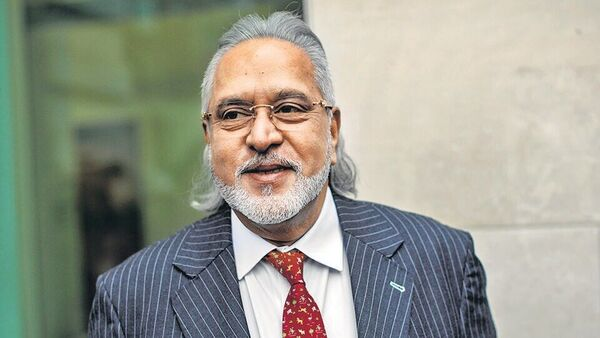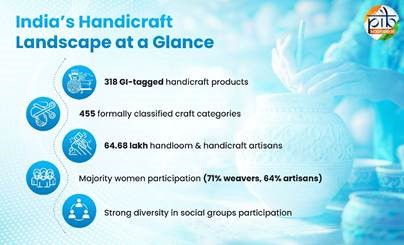Description

Disclaimer: Copyright infringement not intended.
Context
- The Ministry of Statistics and Programme Implementation (MoSPI) released economic growth data — Gross Domestic Product (GDP) and Gross Value Added (GVA) — for the third quarter (Q3 or October to December) of the current financial year (2022-23 or FY23), as well as the so-called Second Advance Estimates (SAEs) for the full year.
Details
- The National Statistical Office (NSO) under the Union Ministry of Statistics and Programme Implementation (MoSPI) retained the overall growth estimate for the full year 2022-23 at 7%, the same as the first advance estimates released in January.
- This means India’s GDP is estimated to grow at 5.1% in Q4, significantly higher than the 4.2% projected by the Reserve Bank of India (RBI) in its December policy review.
.jpeg)
What are GDP and GVA?
- Both GDP and GVA measure India’s economic growth.
- The GDP does this by adding up who spent how much; it thus captures the “demand” in the economy.
- The GVA calculates the same national income from the supply side. It adds up the value added (in money terms) by the different sectors of the economy.
Under GDP, there are four main heads:
-
- Private Final Consumption Expenditure (PFCE) or the money spent by people on goods and services for personal consumption; this is the biggest contributor of GDP, accounting for almost 55%-60%
- Government Final Consumption Expenditure (GFCE) or the money spent by governments towards its daily needs; this accounts for 10% of GDP.
- Gross Fixed Capital Formation (GFCF) or the money spent by private firms and governments towards building productive capacities (investments); this is accounts for 30%-32% of GDP
- Net of exports and imports; this is typically a negative impulse to GDP because imports are more than exports, implying money going out of the country.
- GDP and GVA are related as follows: GDP = GVA +Taxes levied by governments on products (excise duties, sales tax, service tax, import and export duties) – subsidies provided by government on products (food, petroleum and fertiliser subsidies)
- Typically, the absolute level of GDP is more than the absolute level of GVA because taxes received are more than subsidies spent by the government.
What does the data for Q3 show?
- On the GDP front (see Table 1), the growth rate has decelerated to just 4.4% in Q3. This is below the expected level.
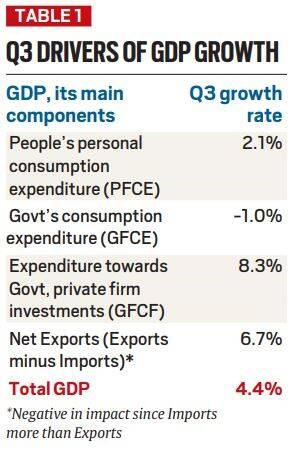
- On the GVA front (see Table 2), the biggest story is the contraction in manufacturing. But robust growth in the construction sector, as well as services (both financial and non-financial), are a relief.
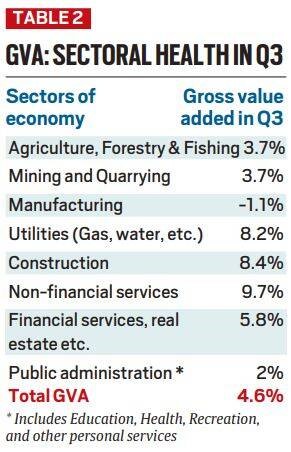
Revised estimates for the past years
- In contrast to the deceleration in growth in FY23, the government has revised up the GDP growth numbers for each of the past three years (see Table 3).
- As such, GDP grew by 3.9% in FY20 as against 3.7%; it fell by just 5.8% in FY21 instead of 6.6% as previously reported and it grew by 9.1% in FY22 as against a growth of 8.7% reported earlier.
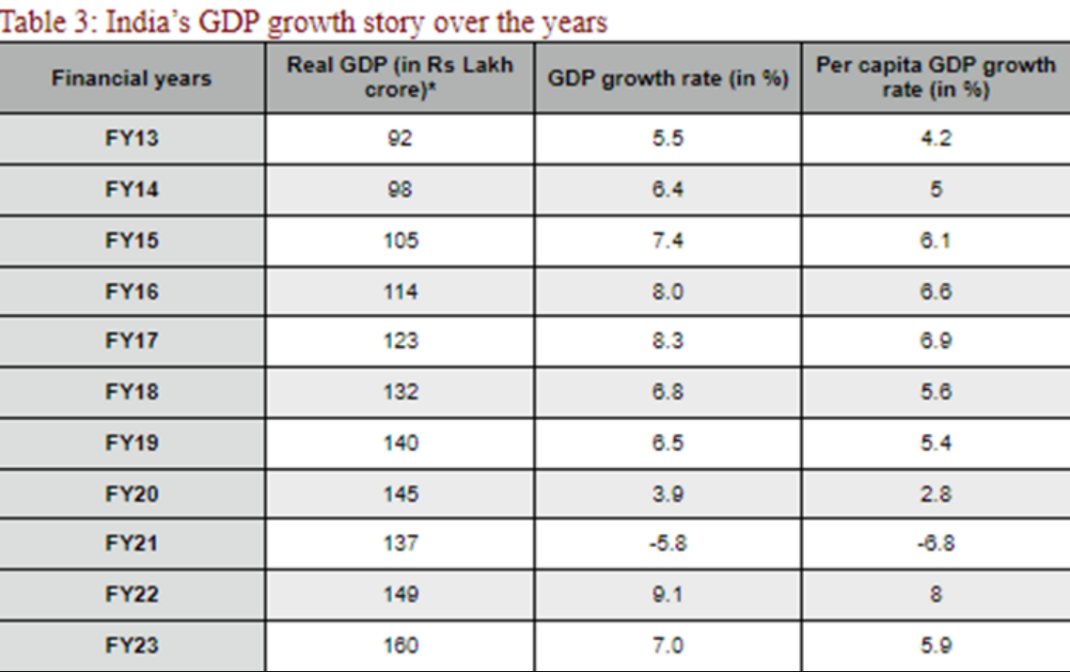
- In other words, while India’s economy may be slowing now, it grew at a faster pace than previously reported.

Outlook
- India’s economy was fast losing momentum before Covid-19 led to a contraction.
- Coming out of the Covid pandemic, India’s economy has reclaimed the mantle of the fastest-growing major economy in the world.
- However, data suggests that India is losing this momentum, whereby it is likely to slow down from 9.1% in FY22 to under 7% in FY23 and further decelerate to well under 6% in the coming financial year.
Read about: https://www.iasgyan.in/daily-current-affairs/national-statistical-office-nso-data
https://indianexpress.com/article/explained/india-gdp-data-q3-growth-explained-explainspeaking-udit-misra-8472147/
|
PRACTICE QUESTION
Q) Which of the following statements is/are correct?
a. Gross Fixed Capital Formation (GFCF) or the money spent by private firms and governments towards building productive capacities (investments).
b. National Statistical Commission (NSC) of India is an autonomous body which formed in June 2005 under the recommendation of Rangarajan commission.
I. Only a
II. Only b
III. Both a and b
IV. Neither a nor b
Answer: Option III
|














